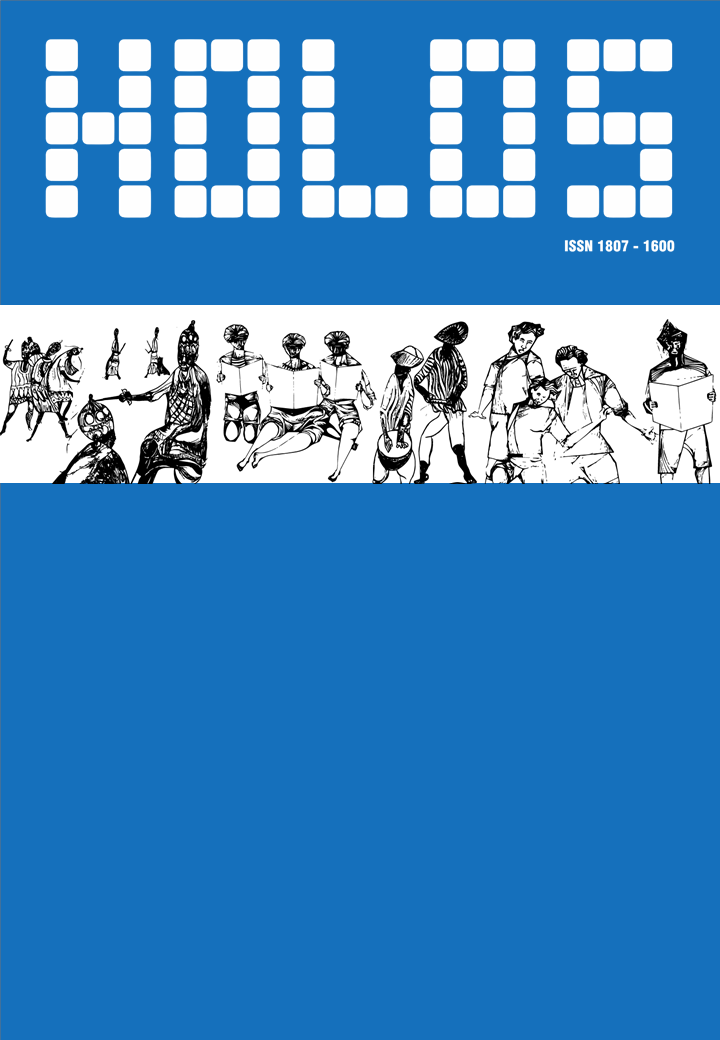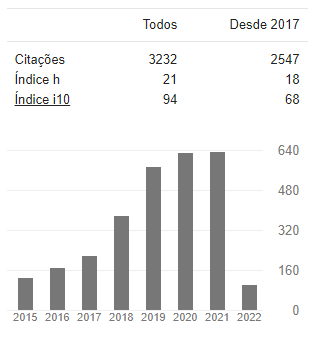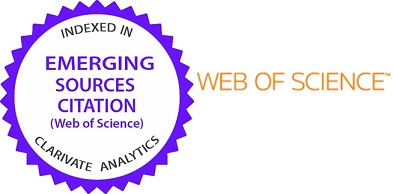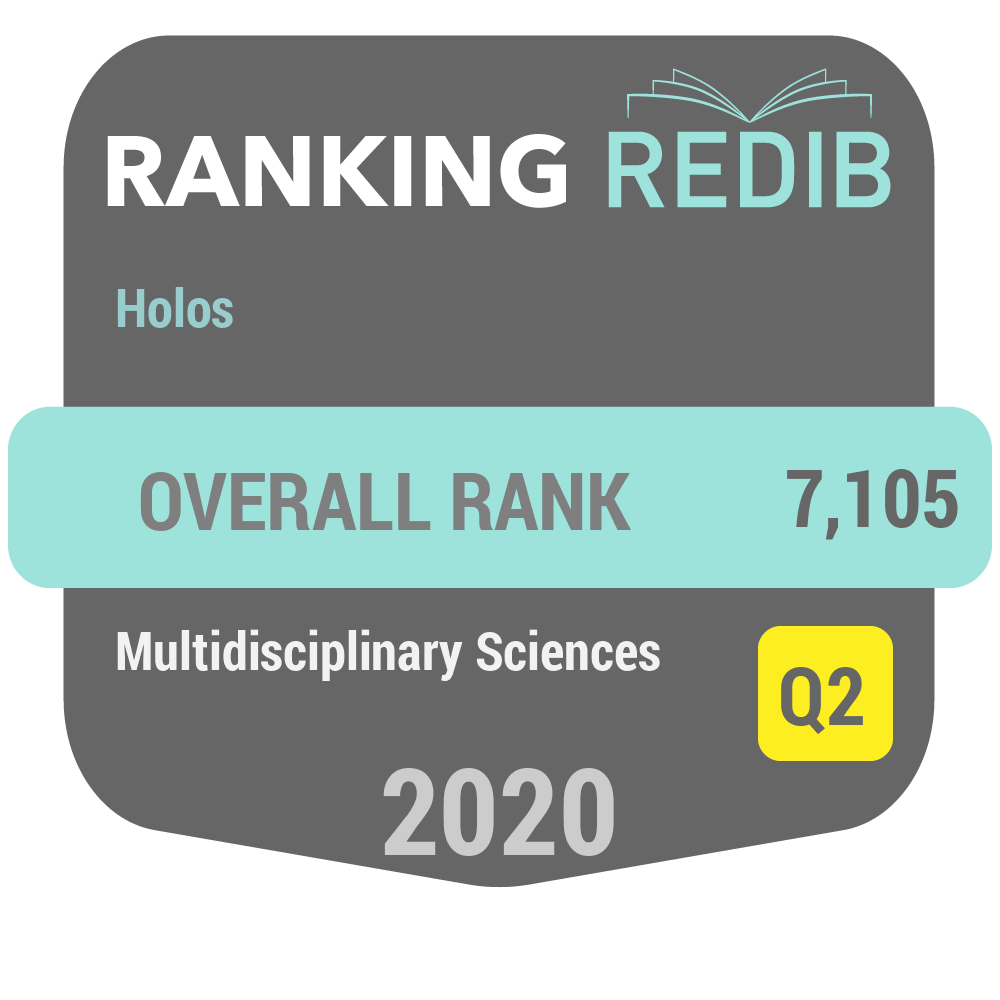THE INFLUENCE OF PASSENGER TRAFFIC IN BRAZILIAN AIRPORTS ON INCREASED CASES OF COVID-19
DOI:
https://doi.org/10.15628/holos.2020.11281Palavras-chave:
passenger traffic, COVID-19, multiple regression, cluster analysisResumo
The paper aims to evidence the impact of passenger traffic in the airports of major Brazilian tourist destinations and its relation to the spread of COVID-19 pandemic. To achieve this, the study performed a qualitative analysis based on secondary data obtained from official websites of regulatory authorities and a quantitative analysis through the use of multiple regression, cluster and discriminant analysis in order to measure a cause-and-effect relation between the variables observed. The tourist destinations addressed are the capitals of Brazilian federal states, the national capital (Brasília), and the cities of Campinas, Foz do Iguaçu, and Balneário Camboriú - the choice was made based on the cities with the highest number of airport passenger traffic. The results indicate a strong correlation between passenger traffic in Brazilian capitals and the spread of COVID-19 cases.
Downloads
Referências
ANAC (2020). Consulta Interativa – Indicadores do Mercado de Transporte Aéreo. Retrieved from https://www.anac.gov.br/assuntos/dados-e-estatisticas/mercado-de-transporte-aereo/consulta- interativa/demanda-e-oferta-origem-destino.
ANAC (2020a, May). Malha aérea essencial prevista para maio atenderá 44 cidades brasileiras. Retrieved from: https:// www.anac.gov.br/noticias/2020/malha-aerea-essencial-prevista-para- maio-atendera-44- cidades-brasileiras.
Assunção, M. V. D, Medeiros, M., Moreira, L. N. R, Paiva, I. V. L, Paes, D. C. A. S (2020). Resilience of the Brazilian supply chains due to the impacts of Covid-19. Holos, 36(5), 1-20.
Baker, D. (2015). Tourism and the Health Effects of Infectious Diseases: Are there potential risks for tourists? International Journal of Safety and Security in Tourism and Hospitality, 1 (12), 1-17.
BOUÇAS, C. (2020, May). Mercado aéreo doméstico não voltará ais níveis de 2019 antes de 2022, projeta Iata. Valor Econômico, São Paulo. Retrieved from: https://valor.globo.com/empresas/noticia/2020/05/13/mercado-aereo-domestico-nao-voltara-aos-niveis-de-2019-antes-de-2022-projeta-iata.ghtml
Bowen Jr, J. T., & Laroe, C. (2006). Airline networks and the international diffusion of severe acute respiratory syndrome (SARS). Geographical Journal, 172(2), 130-144.
Cai, J., Xu, B., Chan, K. K. Y., Zhang, X., Zhang, B., Chen, Z., & Xu, B. (2019). Roles of different transport modes in the spatial spread of the 2009 influenza A (H1N1) pandemic in mainland China. International Journal of Environmental Research and Public Health, 16(2), 222.
Findlater, A., Bogoch, I. (2018) Human Mobility and the Global Spread of Infectious Diseases: A focus on air travel. Trends in Parasitology, 34(9) 772-783.
FVG (2020, April). 1a Edição: Impacto Econômico do Covid-19 – Propostas para o Turismo Brasileiro. Retrieved from: https://fgvprojetos.fgv.br/sites/fgvprojetos.fgv.br/files/01.covid19_impactoeconomico_v09_com pressed_1.pdf
FVG (2020a, May). 2a Edição: Impactos Econômicos da Covid-19 – Propostas para o Turismo Brasileiro. Retrieved from: https://fgvprojetos.fgv.br/sites/fgvprojetos.fgv.br/files/02.covid19_impactoeconomico_turismo2_ v07_fichacatalografica.pdf
Gössling, S., Scott, D., Hall, M. (2020). Pandemics, tourism, and global change: a rapid assessment of COVID-19. Journal of Sustainable Tourism, ahead-of-print, 1-20. Doi: 10.1080/09669582.2020.1758708.
Hair, J. F., Anderson, R. E., Babin, B. J., & Black, W. C. (2010). Multivariate data analysis: A global perspective (Vol. 7).
IATA (2020, May). Air Passenger Market Analysis. Retrieved from: https://www.iata.org/en/iata- repository/publications/economic-reports/air-passenger-monthly-analysis---may-2020/
Kuo, H. et al. (2008). Assessing impacts of SARS and Avian Flu on International Tourism demand to Asia. Tourism Management, 25(5) 917-928. Doi: 10.1016/j.tourman.2007.10.006
Lee, C. et al. (2012) The impact of non-pharmaceutical interventions for 2009 H1N1 influenza on travel intentions: A model of goal-directed behavior. Tourism Management, 33(1), 89-99. Doi: 10.1016/j.tourman.2011.02.006
Mangili, A., Gendreau, M. (2005). Transmission of infectious diseases during commercial air travel. Lancet, 365(9463), 12-18 march, 2005. Doi: 10.1016/S0140-6736(05)71089-8.
Ministério da Infraestrutura (2020, May). Conjuntura do setor aéreo. Retrieved from: https://www.gov.br/infraestrutura/pt-br/centrais-de-conteudo/conjuntura-setor-aereo-maio-2020- pdf
Ministério do Turismo. (2018). Plano Nacional de Turismo 2018-2022. Retrieved from: http://www.turismo.gov.br/images/pdf/PNT_2018-2022.pdf.
Ministério do Turismo. (2020a). Mapa do Turismo 2019-2021. Retrieved from: http://www.mapa.turismo.gov.br/mapa/init.html#/home.
Ministério do Turismo. (2020b). Anuário Estatístico do Turismo – 2020. v. 47, Brasília/DF.
Novelli, M., Burgess, L., Jones, A., Ritchie, B. (2018). ‘No Ebola... still doomed‘ – The Ebola- induced tourism crisis. Annals of Tourism Research, 70, 76-87. Doi:10.1016/j.annals.2018.03.006
Page, S., Song, H., Wu, D. (2012). Assessing the Impacts of the Global Economic Crisis and Swine Flu on Inbound Tourism Demand in the United Kingdom. Journal of Travel Research, 51(2), 142¬153. Doi: 10.1177/0047287511400754.
Pine, R., McKercher, B. (2004). The Impact of SARS on Hong Kong‘s tourism industry. International Journal of Contemporary Hospitality Management 16(2), 139-143. Doi: 10.1108/09596110410520034
Richter, L. (2003). International Tourism and its Global Public Health Consequences. Journal of Travel Research, 41(340), 340-347. Doi: 10.1177/0047287503251543
Rodríguez-García, R. (2001). The Health – development link: travel as a public Health issue. Journal of Community Health, 26(2), 93-112.
Sánchez, M. M. Flujos turísticos, geopolítica y COVID-19: cuando los turistas internacionales son vectores de transmisión.
Sancho, A. (1998). Introducción al turismo. Madrid: Organización Mundial del Turismo.
Sigala, M. (2020). Tourism and COVID-19: impacts and implications for advancing and resetting industry and research. Journal of Business Research.
UNWTO. (2019, January 21). International Tourist Arrivals reach 1.4 billion two years ahead of forecasts. Retrieved from: https://www.unwto.org/global/press-release/2019-01-21/international- tourist-arrivals-reach-14-billion-two-years-ahead-forecasts.
UNWTO (2020a, April 28). 100% of global destinations now have covid-19 travel restrictions, UNWTO reports. Retrieved from: https://www.unwto.org/news/covid-19-travel-restrictions
UNWTO (2020b, May). UNWTO World Tourism Barometer May 2020 Special focus on the Impact of COVID-19 (Summary). Retrieved from: https://webunwto.s3.eu-west- 1.amazonaws.com/s3fs-public/2020-05/Barometer%20-%20May%202020%20-%20Short.pdf
UNWTO. (2020c, July 28). International Tourism and COVID-19. Retrieved from:https://www.unwto.org/international-tourism-and-covid-19.
Wilson, M.E. (2003). The traveller and emerging infections: sentinel, courier, transmitter. Journal of Applied Microbiology, 94, 1S-11S.
Zhang, Y., Zhang, A., & Wang, J. (2020). Exploring the roles of high-speed train, air and coach services in the spread of COVID-19 in China. Transport Policy.
Zhao, X., Liu, X., & Li, X. (2020). Tracking the spread of novel coronavirus (2019-nCoV) based on big data. medRxiv.









































